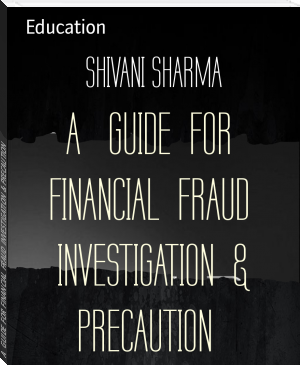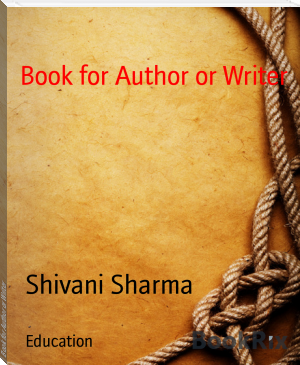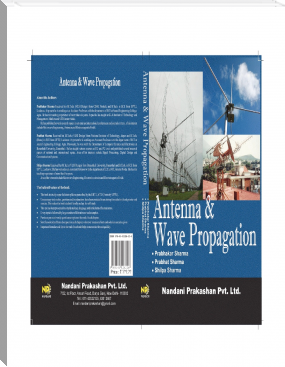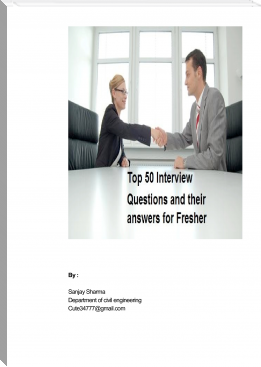A GUIDE FOR FINANCIAL FRAUD INVESTIGATION & PRECAUTION by SHIVANI SHARMA (thriller books to read txt) 📖

- Author: SHIVANI SHARMA
Book online «A GUIDE FOR FINANCIAL FRAUD INVESTIGATION & PRECAUTION by SHIVANI SHARMA (thriller books to read txt) 📖». Author SHIVANI SHARMA
Under the TM Act, the term ‘mark’ is defined to include ‘a device, brand, heading, label, ticket, name, signature, word, letter, numeral, shape of goods, packaging or, combination of colors, or any combination thereof.’ Thus, the list of instances of marks is inclusive and not exhaustive. Any mark capable of being ‘graphically represented’ and indicative of a trade connection with the proprietor is entitled to get registered as a trademark under the TM Act. This interpretation opens the scope of trademark protection to unconventional trademarks like sound marks provided they satisfy the ‘graphical representation’ test and are not prohibited under Section 9 and 11 of the Act. The only way the mark may be described in the application for trademark is by way of “graphical representation”. However, the TM Act or the rules framed thereunder do not contemplate the form of submission of records of the unconventional trademarks.
II. Scope of ‘Graphical Representation’:- Trademark Rules define “graphical representation” as representation of a trademark for goods or services in paper form.2 Therefore, sound marks can be represented on paper either in descriptive form e.g. kukelekuuuuu (registered as Dutch sound mark - onomatopoeia which sounds like the call of a cock) or as traditional musical notations e.g. D#, E etc. Other alternative methods for their visual representation have also emerged like depictions by oscillogram; spectrum, spectrogram and sonogram are now being accepted in other jurisdictions. However, such representations must be handled carefully in order to meet the requirements of trademark offices in India. In the case of Yahoo’s Yodel mark, they represented the mark using musical notations.
III.Syncing the Indian Law to Tide over the Hurdles of Registration Reducing a sensory mark to a written description on paper may not be always possible. A “graphical description” of a sound mark should clearly identify the exact sound, else the enforcement of the same, would lead to practical issues. E.g. the search result of the trademark at Trade Mark Registry would not be accurate if the mark is not appropriately described. Merely musical notes without a listing of the note pattern would not provide enough sensory information to contemplate the scope of protection on the mark. Musical notations alone are neither a clear nor precise description of the sound mark and gives no information about the pitch and duration of the sounds forming the melody. The graphical representations should be clear, precise, selfcontained, easily accessible, intelligible, durable and objective. A stave divided into bars and showing, in particular, a clef, musical notes and rests whose form indicates the relative value and, where appropriate, accidentals (sharp, flat, natural) - all of these determine the pitch and duration of the sounds. This may constitute a faithful representation of the sequence of sounds forming the melody in respect of which registration is sought.
With regard to onomatopoeias, there is lack of consistency between the onomatopoeia itself, as pronounced, and the actual sound or noise which it purports to imitate phonetically. Practical difficulties are bound to arise when trademark searches will be required. For e.g. if the sound mark is a crow’s call and is described as kukelekuuuuu, the same may be spelt differently or represented with musical notations. The procedure may be highly complicated as musical notations need to be matched against alphabets. To simplify matters, a sample of the sound may be submitted with the application. A separate database of these sound marks can be created and rules for determination of deceptive similarity between sound marks should be developed.
Indian Trade Mark Registry may have enhanced the scope of protection under the trademark umbrella, but there need to be clear guidelines for description, recording and protection that will help define the boundaries of protection of unconventional marks.
IV. Who can Apply?:-Any person claiming to be the proprietor of a trademark used or proposed to be used by that person can file an application for registration. The application may be made in the name of the individual, partner of a firm, a company, any government department, a trust, or even in name of joint applicants. Domestic and international applicants are treated at par. An application can also be filed on behalf of a company that is about to be incorporated or registered under the Companies Act, 1956.
V. Is Prior use Required?:- Prior use of the trademark is not a prerequisite for filing application or its registration and an application may be made for registration even if the intention of the applicants is bona fide use of the trademark in the future. In such a case, the application can be filed on a “proposed to be used basis”. However, in the case of descriptive marks, the Trade Marks Registry usually insists upon proof of use of the mark and the distinctiveness acquired through such use before granting a registration.
VI. Is a Prior Search Necessary?:- Though a prior search for a conflicting trademark is not a prerequisite for filing an application, it is advisable to carry out a search and maintain the search results. In opposition proceedings or in infringement / passing off actions, such search reports act as proof of honesty and good faith in the adoption of the marks. In a move to curb the spread and sale of counterfeit drugs, the Drugs Control Department of the National Territory of Delhi has made search reports from the Registrar of Trade Marks mandatory before approving any drug-manufacturing license under a particular brand name.
This initiative by the Delhi Drugs Authority is in pursuance of the Indian Supreme Court’s (SC) observations in the case of Cadila Health Care Ltd. v. Cadila Pharmaceuticals Ltd. (decided on March 26, 2001).5 If adopted in the other states in India, this provision will eliminate the chances of approval of a deceptively similar and look-alike brand of the existing products.
VII. What is the Process of Registration?:- The application for trademark registration must contain a clear reproduction of the sign, including any colors, forms, or three-dimensional features. These forms need to be filed with the appropriate office of the Trade Marks Registry. The sign must fulfill certain conditions in order to be protected as a trademark – or as another type of mark – and must indicate the class of goods / services to which it would apply. The TM Act has laid down absolute6 and relative grounds of refusal7 of trademark registration. These grounds are akin to the provisions of the UK Trademark Act of 1994.
TYPE OF FRAUD
These are a different type of fraud you find in the market. These are as follow:
Check Fraud. Check fraud occurs when a person pays for something with a check knowing that there is not enough money in the account to cover the cost, or when an individual forges a check was stolen from someone else. Internet sales. Internet frauds are becoming more prevalent since the world relies heavily on technology. This type of fraud involves selling fake or counterfeit items or taking payment with no intention to ship or deliver the item. Website misdirection. This occurs when hackers mimic reputable companies such as Amazon, eBay, or PayPal, redirecting consumers to another website where they enter their credit card information. The criminal then uses this information to make personal purchases. Charities fraud. For many years, criminals have taken advantage of the fact that Americans generously give to worthy causes. Criminals solicit people to make donations to various causes that do not actually exist. Work-from-home scams. Working from home sounds like a dream to many people, so it is not surprising that a number of Americans fall for this type of fraud each year. Criminals promise income to people who sign up for their fictitious work-from-home job, often requiring that money be paid up front with the promise of a big payoff in a short amount of time. Pyramid schemes. These work-from-home type schemes promise the consumer large returns on their investment if they are able to recruit others to their network. People often pay money up front to buy into the business, or to buy a sales package of some type, and only make money if they get a large number of people to join beneath them. Identity theft. One of the most commonly perpetrated types of fraud in this age, identity theft robs victims of their money, credit rating, and personal identity. Fraudsters obtain a credit card, bank account, and other personal information, using them for personal gain. Credit card fraud. In today’s climate of electronic money, credit card fraud has become a prevalent crime. By obtaining people’s credit card information, through a variety of means, the perpetrator can quickly make a large number of purchases before the consumer even realizes what is happening. Credit card fraud is classified as identity theft, identity assumption, or a fraud spree, depending on the specifics of the crime. Debt elimination. Many Americas find themselves deeply in debt, making it easy for criminals to offer them an opportunity to climb out from under a mountain of bills. Fake companies produce ads and other solicitations promising to help eliminate every type of debt, from credit card bills to taxes, for a partial payment up front. The victim fronts the payment as well as their credit card information, getting nothing in return, and often having their information sold to other fraudsters. Insurance fraud. Insurance fraud is committed every day in the U.S., by people who otherwise would not consider themselves to be criminals. False or inflated insurance claims for automobile damages, health care expenses, and homeowners or renters insurance are considered to be insurance fraud and may be charged as felonies, depending on the circumstances and amount of the fraud. Health care fraud:- Health care fraud is a type of fraud involving the use of the health care system by an individual, medical provider, or insurance company in a deceitful manner in order to profit from it. While health care fraud may not seem like a crime that can hurt others, it does have a negative impact. Health care fraud influences insurance rates every day, causing premiums individuals to pay to rise to cover the insurance companies’ losses. Such fraud committed by a healthcare provider can cause the loss of professional license and may affect the healthcare of their patients. Bank Account Takeover Fraud:-One of the worst types of fraud to clean up is when a thief gets access to your bank account. This can happen pretty easily just by someone stealing a check out of your mailbox, getting ahold of your account info through an email scam, or (in some extreme cases) using malware to gain access to all of your personal information. This type of fraud can completely drain your bank account
 The desire to acquire knowledge about the surrounding world and human society is quite natural and understandable for a person. Life is so developed that an uneducated person will never occupy a high position in any field. Humanity in its mass, and each person individually, develops objectively, regardless of certain life circumstances and obstacles, but with different intensity. The speed of development depends on the quality of training.
The desire to acquire knowledge about the surrounding world and human society is quite natural and understandable for a person. Life is so developed that an uneducated person will never occupy a high position in any field. Humanity in its mass, and each person individually, develops objectively, regardless of certain life circumstances and obstacles, but with different intensity. The speed of development depends on the quality of training.




Comments (0)